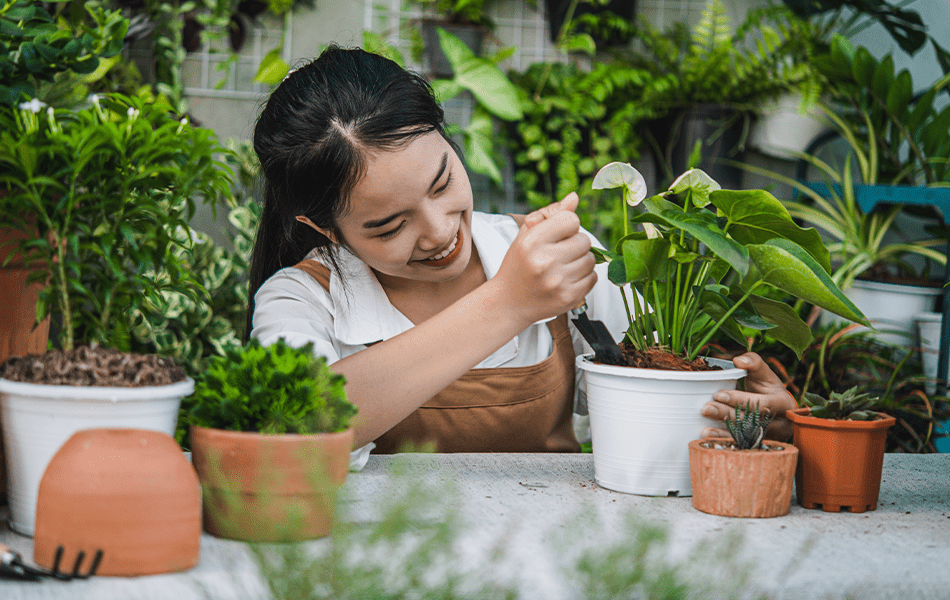Learning a new language, tackling new food recipes, organizing closets, making DIY projects, starting an online business. These may seem like unrelated activities, but they are just a few of the many things people are doing to change up their daily routines, lessen anxiety, and adjust to spending more time at home as a result of the pandemic. Not surprisingly home gardening has sparked a resurgence in interest along with the popularity gained by social media jargon of “Plantito and Plantita” to describe people who enjoy and find fulfillment in gardening. While some people appreciate the ornamental plants’ beauty, others use gardening to encourage community sustainability. One of the most rewarding things you can do is start a home garden. Caring for plants has numerous benefits for one’s health: the physical activity of gardening contributes to a healthy weight and blood pressure levels, while interaction with plants improves one’s mood and mental health. It could also be another source of additional income, or a source of produce that can be consumed if you’re planning to start a vegetable garden. So how to grow your own garden? Are there some home gardening tips? Questions like these are the basics we have to research beforehand in preparing ourselves before starting to actually make one.
How to Grow Your Own Garden
1. Start from a small garden
You may feel overwhelmed if you attempted to start a wide garden on your first try. Choose a small area to begin with and gradually expand as you gain confidence and comfort with your abilities.
2. Pick a suitable location for the garden
It’s important to remember that most vegetables, herbs, fruits, and flowers need ample amount of sun exposure every day. A location with at least five to eight hours of direct sunlight per day is ideal for the garden. In the Philippines, a lot of vegetables prefer full sun exposure and do best when the temperature is above 65 °F. A reliable drainage system is also necessary. Although a flat area is ideal for growing vegetables, they can also be grown on slopes if rows are run across to prevent runoff and erosion.
Be cautious around children’s play areas, wildlife, and young plants from pet damage. New seedlings and small plants might get damaged without noticing by them if not placed in a secured location. Decide on the type and size of the garden bed(s) once you have decided where you want your next garden space to be. Although attractive and possibly making gardening work easier, raised beds also dry out more quickly. Sunken beds can be used to collect available moisture in extremely dry areas. A small, well-kept garden can yield just as much or even more than a large, neglected one.
The most typical bed shapes are rectangular or square, but your options are only limited by your creativity and building abilities. Although rectangular raised bed kits are the most common, you can also use sections of drainpipe or other found objects to grow your garden.
Vertical gardening – A vertical garden is one that uses shelving, trellises, or some other kind of support structure to make plants grow vertically, as opposed to horizontally, on the ground.
A vertical garden’s objective is to maximize the growing area by expanding upward rather than outward. Vertical gardens include things like tower gardens, pocket planters, living walls, fruit trees, and even hanging baskets. A vertical garden can theoretically include anything that is grown on a trellis or even a fence. Vegetable, herb, and fruit growing in vertical gardens is popular.
3. Check the soil
Remember that digging soil that is too wet or too dry could destroy its structure if your goal is to loosen the soil so that the roots can encroach more easily. Verify that the soil has an appropriate balance of moisture and dryness. To maintain the proper balance of moisture and dryness, the soil should contain 25% water and 25% air. Pick up a small amount of soil and balance it to see how well it works. Check to see if the soil crumbles apart when you press it. Once the soil has been loosened, add some organic compost. Simply spread the compost on the outer layer of your tilled soil in the planting areas.
The majority of plants prefer an organically rich, deep, well-drained soil. Good garden soil is necessary for plant roots to produce quality fruits and vegetables.
As your garden grows year after year, you’ll develop a new appreciation for healthy soil. Healthy, vibrant soil produces healthy, vibrant plants that are more nutrient-dense and resistant to disease and pests.
4. Give them enough water
Overwatering is just as bad as underwatering, so check the soil before turning on the faucet or filling the rain barrels. Too-wet soil can cause seeds and roots to rot. While watering, foliar feeds such as compost tea can be added to provide extra nutrition and a dose of healthy microbes to plants.
Seeds resemble newborn humans. They have numerous requirements that necessitate constant full attention. How often you water them will depend on the soil you choose and the local climate. Water your plants gradually to ensure that both the soil and the plants fully absorb water once you notice that they are starting to slightly wilt in the extreme heat. Plants may require different amount of water depending also on the type of plant so consider researching more in depth about it before watering it for better result.
5. Prepare the necessary gardening tools
A hand trowel, pruners, shears, a garden hose or water sprinkler, some gloves, and other essential tools should be used. With its scoop-shaped metal blade, a hand trowel is useful for digging small holes for planting and weeding.
Shears and pruners are both tools used for cutting. However, the main distinction between the two is that shears are designed to cut long grass and small hedges, whereas pruners can be used to cut smaller plants and shrubs. Finally, you’ll need a water sprinkler or hose to provide plenty of water for the plants. Wearing gloves while performing dirty work may help to protect your hands.
If you can help it, avoid purchasing low-cost plastic tools. Visit your neighborhood garden center or look for real metal tools at yard and estate sales for discounts. To lessen the chance of injury, purchase tools that are the proper size for you. You’ll save time, effort, and your back by using good tools. Like you would a good knife, keep your tools clean and well-kept.
6. Plant with care
Basic planting instructions are typically included with seed packets and transplant containers. After laying the foundation (figuratively speaking), all that’s left to do is start planting. Simply give it a shot; the rest can be learned as you go.
Generally speaking, when planting in your garden:
- Most transplants are planted at the same depth they were growing in the pot for transplants.
- Unless otherwise specified on the package, plant seeds about three times as deep as the diameter of the seed. For some seeds to germinate, light is necessary.
- When planted outdoors, young plants may require protection or hardening off because they are more susceptible to damage than older plants.
Home gardening tips
1. Select a vegetable that are easier to grow.
The act of cultivating involves preparing the land for crop growth, which requires commitment, patience, and labor. But keep in mind that picking a crop that can be planted and harvested quickly can make cultivation easier. Your primary objective should be to use your crop as the primary or secondary ingredient in your daily meals. It would therefore be best to pick plants for the home garden that are simple to plant and harvest.
2. Check the location to see if there is enough room.
Make sure to take into account the amount of space you currently have inside and outside of your home before choosing the plants you want to grow at home. Planting herbs with shallow roots is highly advised if you live in a condo unit with a small area. The benefit of growing edible flowers or herbs in pots is that you can keep them in the kitchen, display them on a table by a window, or place them next to a piece of art. It would be simple to keep an eye on their development and harvest them when the time was right.
Plant deeply rooted crops with a greater space between seeds if your home has a large garden. Its benefit is that you can cultivate a variety of plants and reap a sizable crop from them. Consider making a DIY drip irrigation system to cut back on water wastage and save money at the same time.
3. Pick suitable plants.
It’s crucial to choose plants that work with your growing environment. This entails placing sun-loving plants in sunny locations, selecting heat-tolerant plants in hot climates, and providing enough space (or a trellis to climb) for ground-eating vines like pumpkins and melons. Do your research and choose varieties that will thrive in the environment and available space where you live.
4. Pick vegetables that can be harvested frequently.
You must ensure that your chosen crops can be produced in large quantities. It’s important to take into account how long it takes to grow and harvest them, but it’s also crucial to think about how much you and your family would likely consume. It would be a good idea to pick a plant that could be multiplied in a single pot. Before you start to thoroughly water them, the seeds may have been widely dispersed on the soil inside the pot.
5. Plant a Variety of Vegetables.
Gaining a lot of experience is the only way to master the art of vegetable gardening. Don’t be afraid to experiment with different fruits and vegetables that you can grow in your own backyard garden or condo unit.
Every crop has a unique growth period, space needs, temperature preferences, and other requirements that must be met. Your ability as a gardener increases as you become more adaptable to different demands.
6. Mulching.
Mulch is any material that is spread or laid over the soil’s surface as a covering. Some mulches are more aesthetically pleasing than others, while others are more functional and can help the soil retain nutrients.
You can add a 2 to 3 inch layer of mulch around each plant. This reduces weeds by blocking out the sun and reduces moisture loss through evaporation, requiring less watering depending on the type you use.
7. Companion planting.
Another for our home garden tip is applying companion planting. For best growth and health, plants must be grown close to other plants of the same kind in addition to the climate. The advantages of companion planting are numerous. Companion plants that require the same amount of moisture and sunlight can coexist successfully. For instance, you cannot grow shade- and sun-loving plants side by side in direct sunlight and expect the shade-loving plants to survive. Similar results occur when thirsty plants are planted next to drought-tolerant plants; either group of plants will receive excessive or insufficient water, and the other group won’t survive.
Vegetable and herb companion planting can resemble a science. To keep insects at bay or to draw nitrogen from the air to improve the soil for nearby plants, some plants are positioned next to others. Researching or checking the plant companion guide in the internet may help you find a good combination as a reference.
Here are some easy to grow plants that you can try
1. Wheatgrass
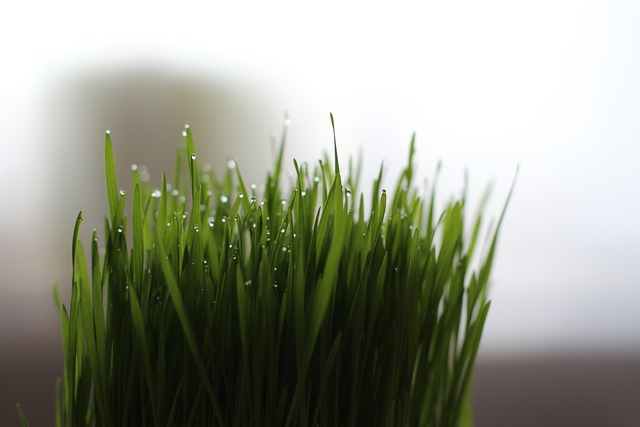
Wheatgrass seeds are fantastic because they only mature after 6
to 10 days, at which point tons of wheatgrass are ready for harvest. Typically, wheatgrass juice is consumed. It will provide you with the advantages of detoxification, which enhances your general health, if you drink it every day. It can be grown in a small pot, allowing you to keep an eye on it while cooking if you place it on a kitchen shelf. If properly washed before juicing, wheatgrass would be beneficial for you as a beverage if your goal is to maintain or improve your health.
2. Malunggay
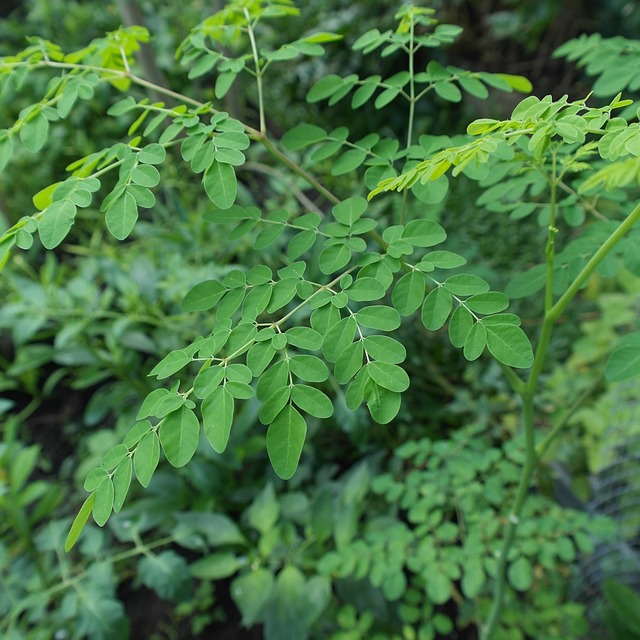
One of Mother Nature’s top superfoods is the moringa, also known as malunggay. It is a common ingredient in many Filipino dishes like ginataan and tinola. It contains a lot of healthy nutrients, including calcium, iron, magnesium, potassium, and vitamins A, B, and C. Malunggay is good for your skin and hair, and if you’re a breastfeeding or expecting mother, it will help you produce more milk. Malunggay is simple to grow because it requires little upkeep and one of the easy to grow vegetables that you can get your hands into.
Make sure the soil is loose, light, and a little sandy, though, before you start planting. Keep in mind that the tree can get up to 20 feet tall.
3. Eggplant
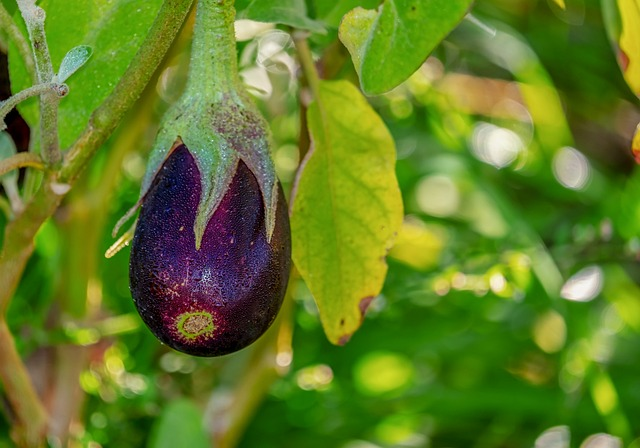
In garden soil, eggplant seeds germinate quickly, and you can harvest a sizable number of them in a month or two. You can use them in well-known Filipino dishes like tortang talong, ensaladang talong, or fried eggplant that you can dip in soy sauce, even though they are less common than tomatoes.
What makes eggplants great is their abundance in dietary fiber, which controls bowel movements. Having an eggplant in your garden would be preferable if you’re a food enthusiast and eat a lot of food to help you lose weight.
4. Basil
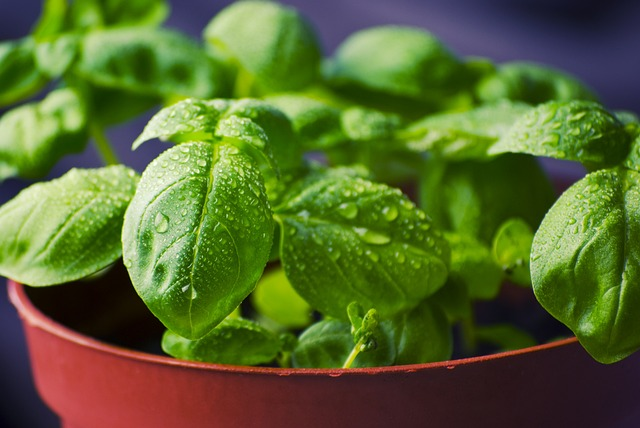
One of the simplest herbs to grow both indoors and outdoors is basil. It has an abundant supply of fresh leaves all year long and grows very quickly. In pots, containers or boxes, the seeds start to sprout in just 5 to 10 days, and after 75 days, they are ready to be harvested.
Salad, pasta, stir-fried chicken, grilled tuna, and even desserts like ice cream and yogurt are just a few of the many dishes it can be used in. Additionally, it has oils and substances called flavonoids that are good for your health. There is no reason not to put gardening supplies on your shopping list if you plan to start doing it at home.
5. Cherry Tomatoes

Lycopene, an antioxidant with a number of health advantages, is abundant in tomatoes. Lycopene promotes digestive health, keeps the skin young, and aids in maintaining a healthy heart.
Many delicious dishes such as kalderta, afritada, and sinigang, contain tomatoes. You can include it in your salad, and sandwich. You won’t be concerned about how to consume tomatoes even during growing season if you harvest tons of them. In pots or in garden soil, tomatoes germinate in just a few days. Tomatoes are a plant you absolutely must grow if you enjoy cooking.
6. Okra
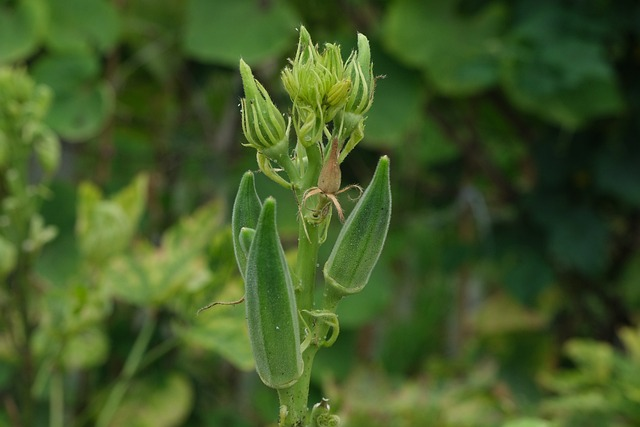
Okra, which grows best in tropical climates, is a popular vegetable in the Philippines. It is a simple crop to grow because it can be planted directly and germinates quickly. It is a crunchy and nutritious vegetable that can be delicious and filling when cooked properly. It’s also simple to grow at home, which will take a couple of weeks to a few months.
It turns out that there are numerous other reasons why home gardening is becoming more and more popular. Many people choose it as a hobby, which is why I first started gardening. Home gardening offers the ideal opportunity to eat fresh, organic foods at a fraction of the price of produce from the grocery store, which is a popular way to go green and sustainable.
Hopefully these home gardening tips may help in your gardening journey even a little bit. Just remember to have a good time. If you treat gardening as a chore rather than a pastime, you will quickly lose interest. You can encourage your family members to spend time in the garden with you. Grow plants that interest and excite you, and try to include as many vegetables, herbs, and fruits as you and your family consume on a regular basis in your garden.


